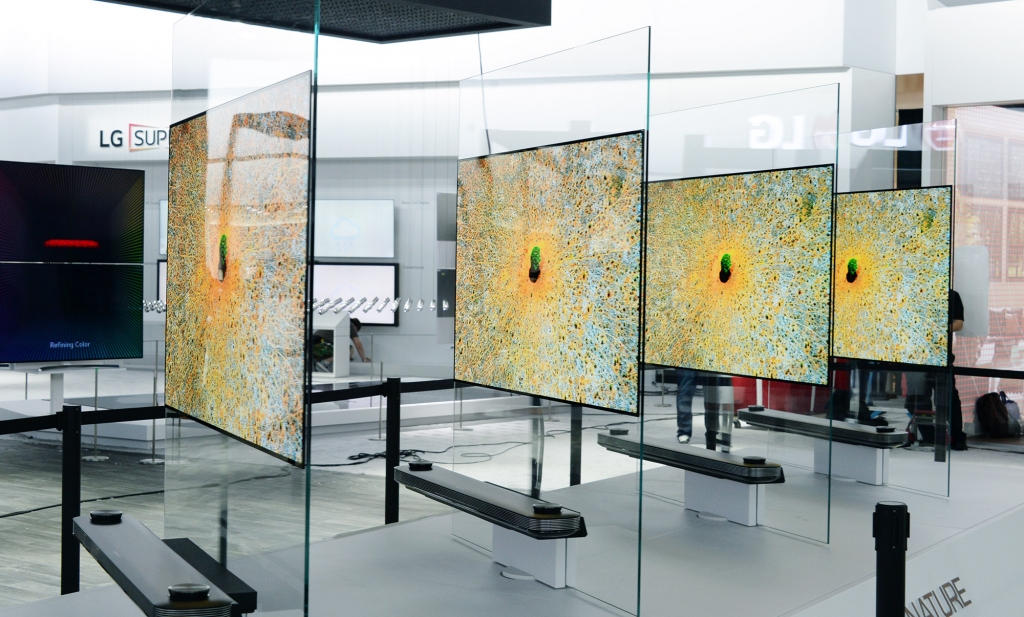
The future of television will be written by LG in four letters – OLED
Television technology has come a long way, transforming not just the way we consume our entertainment, but also the formats in which media is broadcasted or streamed. Today, we can imagine – and expect – TVs to do a lot more than just display our favourite media.
Today, consumers demand TVs that are not just slim, but so thin that they are like paintings on walls. TVs today are more than just appliances, but an element of décor that can seamlessly integrate into the design of a home, and also render the clearest, sharpest images, with the deepest blacks and crispest whites without compromising on resolution. Home cinema is not just about the picture anymore either. Sound is just as important.Consumers want the best in immersive sound technologies like Dolby Atmos, which has had a big impact since its arrival in cinemas and homes, doing for sound what Blu-ray and 4K Ultra HD did for visual depth and quality. Finally, consumers today are eyeing TVs that would be able to learn usage patterns and automatically suggest entertainment based on our individual preferences.
The switch from LCD to LED transformed TV design, allowing for lighter, thinner and easily wall-mountable frames, housing even more sophisticated display tech. The picture quality also dramatically improved with new contrast ratios rendering more vivid colours, deeper blacks and crisper whites. But they were still more functional than aesthetic.
As larger segments of the population embraced internet connectivity and streaming content, the TV became smarter, integrating content-streaming apps for a more seamless viewing experience. As Internet Service Providers (ISPs) upgraded their infrastructures to accommodate the growth in streaming services, TV manufacturers also upgraded their TVs’ ability to tap into different types of content.
In the future, TVs with built in Artificial Intelligence (AI) will be able to learn usage patterns and automatically switch modes based on user preference, and even take instructions from multiple users as TVs become increasingly connected to digital home assistant systems.
When it comes to display technology, where the ultimate transformation of this decade happened was with LG’s pioneering efforts with OLED technology. The world saw its first Organic Light Emitting Diode (OLED) TV in 2012, when LG Electronics unveiled the world’s largest 55” OLED panel. Six years on, and LG continues to lead in the OLED TV market, racking up awards and accolades for its innovative OLED TVs.
LG’s pioneering efforts in the design and manufacturing of OLED TVs has culminated in complete dominance of the OLED market, leaving LG at the very pinnacle of innovation in display technology, redefining the TV viewing experience, and its place in your home. With continued investment in R&D and innovation, LG has made OLED technology affordable and accessible, allowing more people to enjoy a better-quality television experience than before. No TV is a greater testament to this than last year’s award-winning LG SIGNATURE W7 – also known as WALLPAPER.
LG OLED TVs are considered by industry experts to offer the most advanced display technology. As each pixel on the display can be individually switched on and off, OLED offers enhanced picture quality without image degradation. This results in the highest quality image rendering with the purest blacks. With its myriad advantages, OLED panels have become the most desired display technology today and LG is leading the charge in making this technology even more ubiquitous and accessible. With the new LG SIGNATURE W8, set to make its debut this year, all this and more will be possible.
With support for both Dolby Vision™ and Dolby Atmos®, LG OLED TV is the first of its kind to offer a premium cinema experience in the comfort of your home. It also features LG’s Active HDR technology, which optimises HDR picture quality scene-by-scene, rendering brighter scenes and greater shadow detail for a life-like viewing experience.
Despite the market dominance, the development of newer, more innovative technologies does not stop. This year a staggering number of innovative display technologies were unveiled and LG showcased future display technology like roll-able OLED screens and large format curved displays that will become the future of wall art.
AI is also set to make an appearance, like in the upcoming LG SIGNATURE W8. LG’s unique and personalised AI services build on the deep learning-based DeepThinQ technology, in cooperation with other AI service providers such as Google, giving LG’s AI TVs the ability to automatically adjust the settings to Game Mode, or Sports Mode based on whether a user is currently playing Xbox or watching a football match. Ultimately, LG’s AI TV will provide care and comfort to users’ mind and body by learning more about its users’ viewing habits.
What does this all mean for consumers? With continued innovation and development of display technologies, as well as advanced design, AI, premium audio integration and support for the latest resolutions, colour and High Dynamic Range (HDR) standards, the TV will no longer be a display, but a complete home viewing experience. This is what LG’s new range of OLED TVs will bring to fruition in the coming months, making it the ideal time to upgrade your TV to the ultimate home entertainment experience.


























